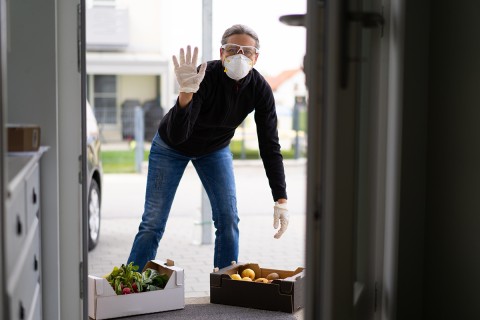The coronavirus pandemic is nurturing neighborliness
We seem to be relearning the social benefits of building community with our not-so-close neighbors.

Marc J. Dunkelman has a simple but compelling thesis about an epochal shift in America’s communal behavior. We now invest the bulk of our relational energies either in close and intimate familial bonds or in distant acquaintanceships often nurtured online. Attention to these inner and outer rings of relationship, as Dunkelman calls them, has come at the expense of tending to the middle rings that once were constituted by close neighborly ties. In The Vanishing Neighbor: The Transformation of American Community (2014), Dunkelman describes the loss of friendship and familiarity that once constituted neighborliness. Americans have become largely estranged from people who live next door, seldom talking with them and often not even knowing their names.
The cultivation of inner rings of relationship is easy to explain. Our personal time leans naturally toward kin and close friends who share similar outlooks and interests in life. Not surprisingly, they’re marked as favorites on our cell phone contact list. Outer rings develop quite naturally as well, though they’re often one-dimensional in nature, organized around a common interest shared online or a passion for a particular identity or cause. In recent decades, it’s these inner and outer rings that have absorbed or replaced the middle rings.
Read our latest issue or browse back issues.
Interestingly, the impact of the coronavirus on daily life seems to be revealing some renewed interest in the social benefits of that middle zone.
I know a young woman who called up the activities director at a local assisted living center to ask if there were residents who would enjoy a visit from her two children. Yes was the obvious answer, though coronavirus isolation meant the visit would have to take place through the exterior windows of the residents’ rooms. Mom brought some dry erase markers for the activities director to pass around. Nine-year-old Annie and seven-year-old Gary used their own markers as they stood outside and played tic-tac-toe with some delighted seniors on the other side of the glass.
Another friend told me about his cul-de-sac neighbors who have never really socialized—until now. At 5 p.m. every day, neighbors pull their lawn chairs to the end of their driveways and share happy hour with people they don’t know all that well. “We’re discovering friendship,” said Terry. “It’s a hoot. There’s no way we would have done this without the confinement we’ve all been under.”
Kids around my neighborhood spend hours chalking the sidewalks with massive spring flower designs and happy sayings. With so many neighbors eager to escape cabin fever and get out for a walk, all kinds of informal bonds are emerging as neighbors visit over the art displays. In New York City, where doctors and nurses are working heroically long hours to tend to COVID-19 patients, whole neighborhoods have been joining first responders to applaud health-care workers as they swap out for shift changes.
This reweaving of the middle rings of neighborliness may be a temporary phenomenon, a social blip on the screen of our lives. The threads may not be long enough or the weave tight enough for this to become an enduring tapestry. But these unique times may also be prompting a wake-up call for what we’ve inadvertently let go of for at least a generation. It’s a positive jolt that may have us all encouraging one another toward some new social habits.
A version of this article appears in the print edition under the title “Our distant neighbors.”







